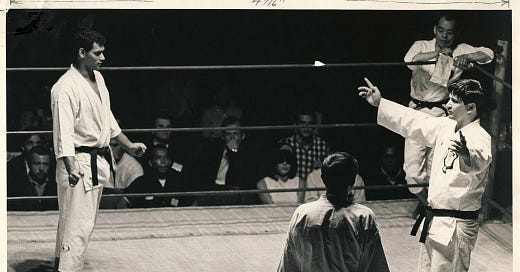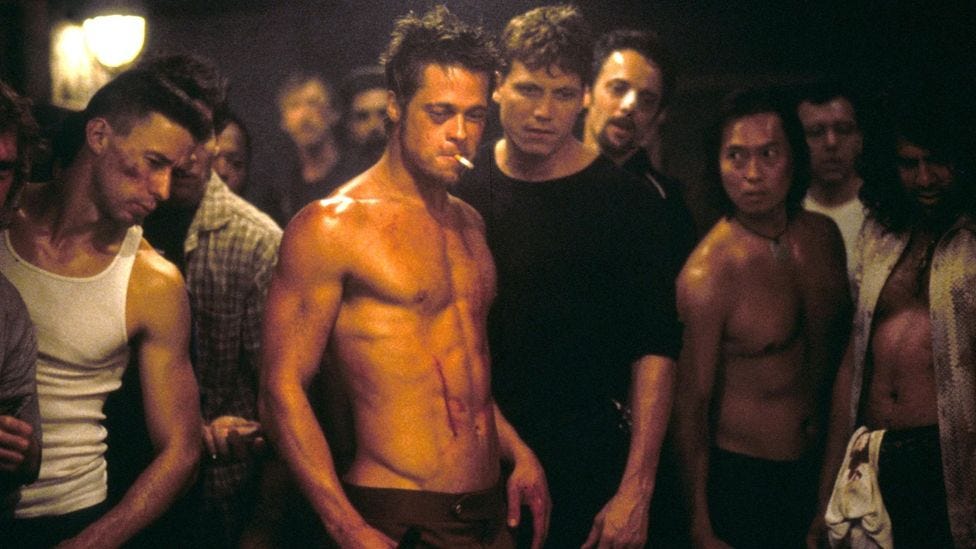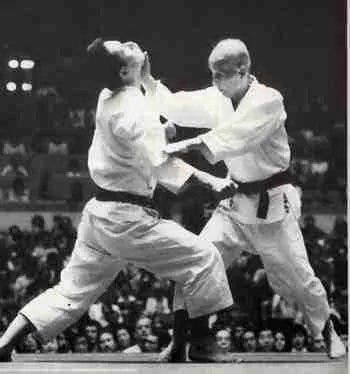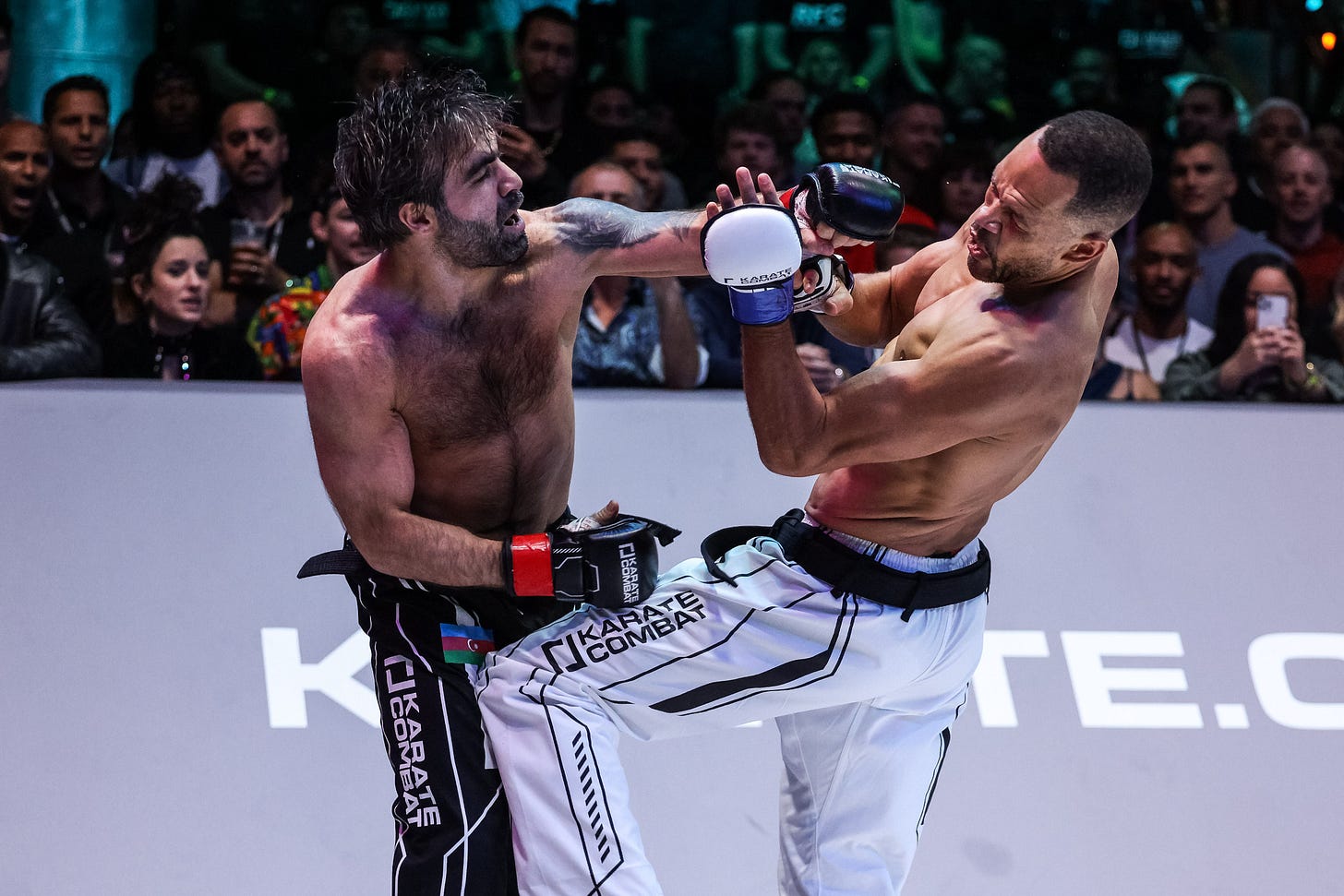This article is a follow-up to “Finding Karate Again: A Retrospective”, which you can read here.
The path forward for karate depends on three angles.
Structure, training, and competition.
1. STRUCTURE
The commercialization of karate is a direct and inevitable result of its structure in the West. The commercial, strip-mall dojo that takes all comers will inevitably become commercialized and defanged. This is not in itself a terrible thing – karate is good for kids, and it can be a great business if you’re a strong instructor. However, reviving the muscular, brutal ethos of karate cannot be done in this environment.
Instead, old methods of organization must be used. The training group must once again become a mannerbund, a group united in purpose without the prospect of financial gain. Traditionally, the issue of organizational structure was solved by limiting the number of students an instructor took on, and expecting gifts as well as some sort of hazing or test from prospective students, who would train nearly full-time. In the modern world, this is obviously untenable; however, the early karate culture in the West can prove instructive.
The earliest unit of karate instruction in the Western world was closer to a club than a “school” – often training in rented space, in a small group with total ability to include or exclude whomever. Spread by word of mouth, maybe a flyer. This is a far better environment for “traditional” training than a commercial school; you can know everybody involved well, train hard, and spar in whatever way you’d like.
In areas without a lot of schools, BJJ fighters do this quite often, and with great success – renting space at a YMCA, a gym, etc. If you train karate and are in the minority who want to build something serious, you can always just do this with a few friends. I believe that this is necessary to revive anything like the “old” karate ethos. If you’re already training “normally”, then this only needs to happen maybe once or twice a week to be a huge benefit.
2. TRAINING
This is where things get more complicated. If you’ve trained karate, you’ve likely learned a form that was neutered in some meaningful way. So, some reconstruction is necessary, in which case cues should be taken from – of all places – HEMA. This is where the small group environment helps as well – you can put together a group of people with varied experiences, and workshop techniques and drills from there.
The critical element is to draw rather loosely from kata, and see how things would translate to the most brutal fight possible. Working in new techniques slowly and creatively, gradually raising them to full speed. Codifying techniques with pictures, sketches, or descriptions isn’t strictly necessary, but some have found it useful in martial art reconstruction efforts.
On a technical level, re-working in the lapel grab is critical; gi BJJ and Judo would be the best supplementals for this. It is also critical to allow throws in sparring, in order to work on takedowns and see how things flow together.
In a proper karate fight, striking at range transitions into brawling, which should transition into a hold, which should transition into clinch striking, which should transition into a takedown and grounded striking with limited grappling. Sabaki Challenge tournaments exemplify this well; you don’t just get the ranged striking of Shotokan or the close-in brawling of kyokushin, but a mixture which is made more interesting by the threat of a hold or takedown. Of course, the lack of punches to the face can make things odd, but that’s the trade-off for fighting bare-knuckle.
Speaking of bare-knuckle… this is the absolute best way to train karate. Pad work, drilling, sparring – all of these should be done without gloves if possible, supplemented by forearm strengthening drills like knuckle push-ups. However, if you want to throw punches to the face, MMA gloves (or the new Karate Combat gloves) are a solid compromise. Full-contact fighting, or as close as possible to it, should be a frequent event. Training with real stakes tends to refine and correct things extremely quickly. Thus, you must fight with strength and ferocity.
Additionally, a strong ethos of physical fitness must be maintained. I don’t think any of my readers need this reiterated, but it is absolutely critical for any serious fight training. I have an article on lifting here, and will post one on conditioning and cardio. But no matter what you do, you should be leaving training sessions absolutely covered in sweat, and probably with some bruises.
You should open and/or close with kata or line drills. The endless repetition of these things is a core element of karate, and as described in the section on esotericism, it builds that unique sort of striking power and authority best described as hitting “heavy.”
3. COMPETITION
This is the crux of any effort to revive karate today: competition.
There needs to be a true crucible for karate, something better than non-contact tournaments hosted in a high-school gym or backroom kyokushin tournaments with less than ten participants.
As of right now, one of the most promising angles for this is Karate Combat. Full-contact fights to knockout, in a pit – it’s extremely watchable, technically sound, and retains the ethos of karate. I’d love to see a feeder tournament system pop up, with local events in a similar style. Perhaps the American Ninja Warrior format could be followed.
But I digress.
Testing yourself in a competitive, full-contact environment is absolutely critical. Again, karate is meant to teach people who are already familiar with combat, and remain consistently engaged in fights. Traditionally this would be street fights – beefs with rival dojos, bouncer work, anything along those lines. I cannot in good faith recommend that you get into street fights to test yourself… but I can express the necessity of this form of testing. Organize local tournaments with another school, fight in local MMA or kickboxing events, etc. Get creative.
These are just some suggestions – obviously, the execution of these things is highly variable, and I can’t account for every eventuality. But, this piece will hopefully provide some sort of theoretical grounding for a revival of karate: decentralized, re-fanged, once again full and combative.







